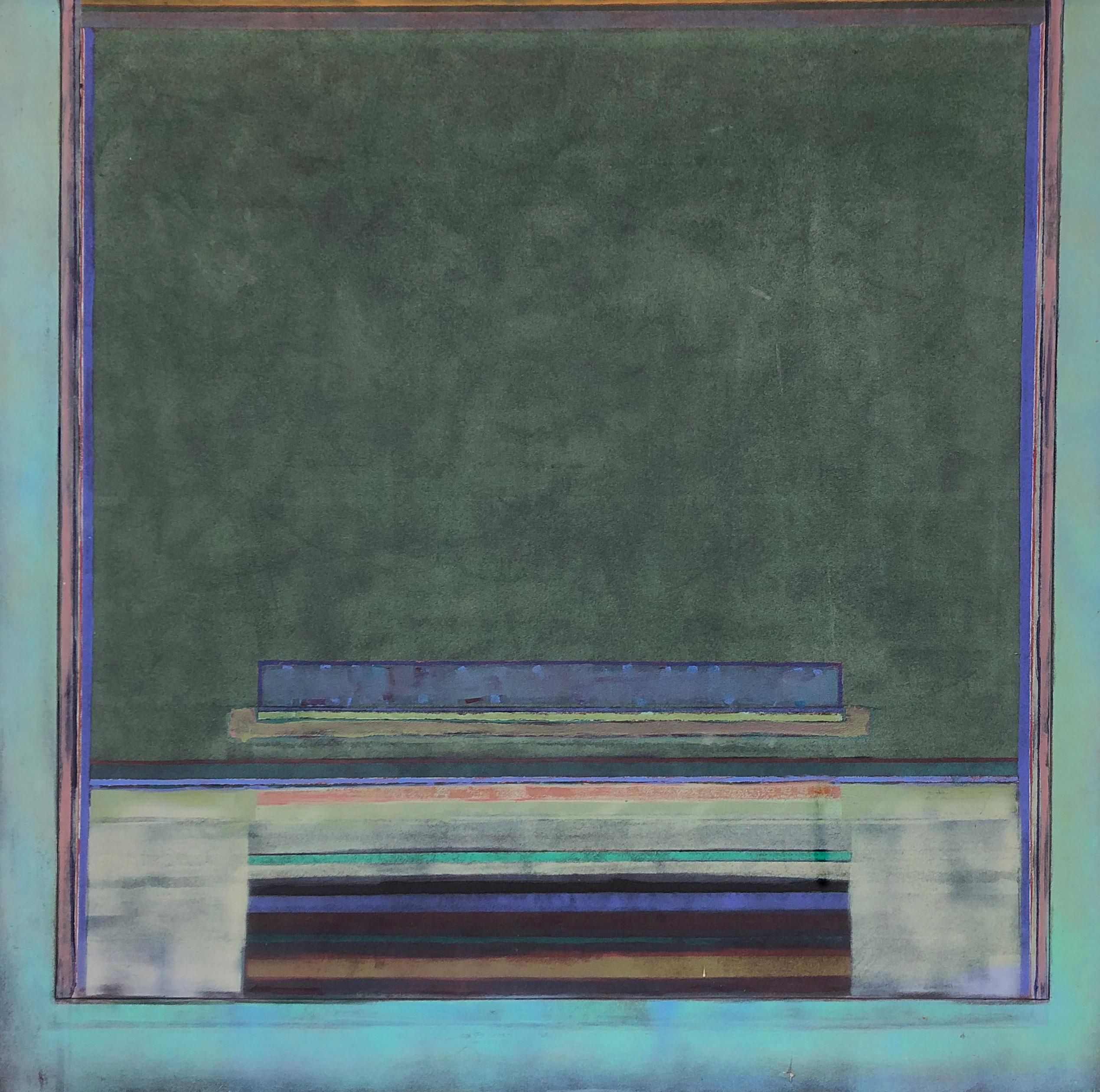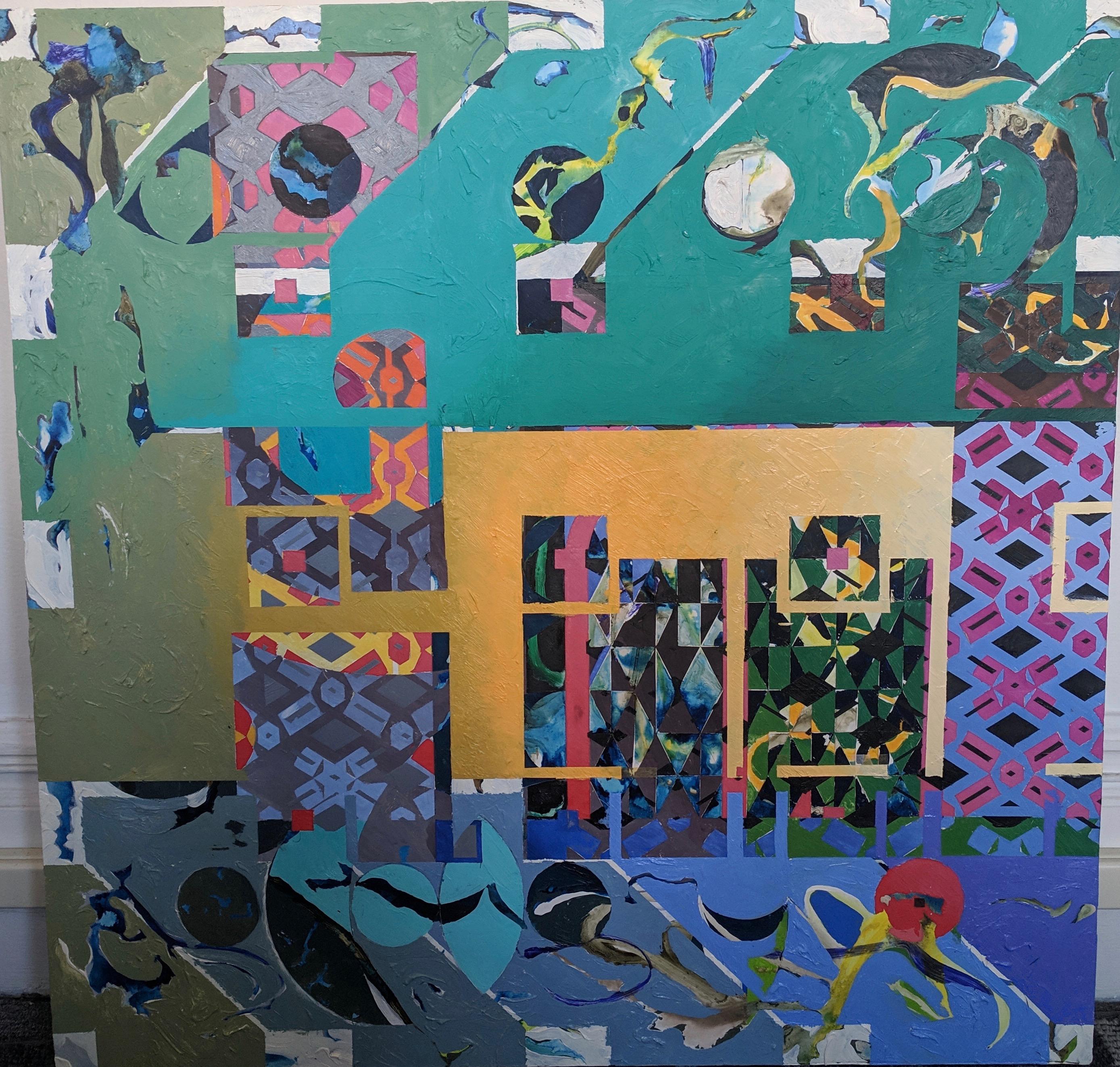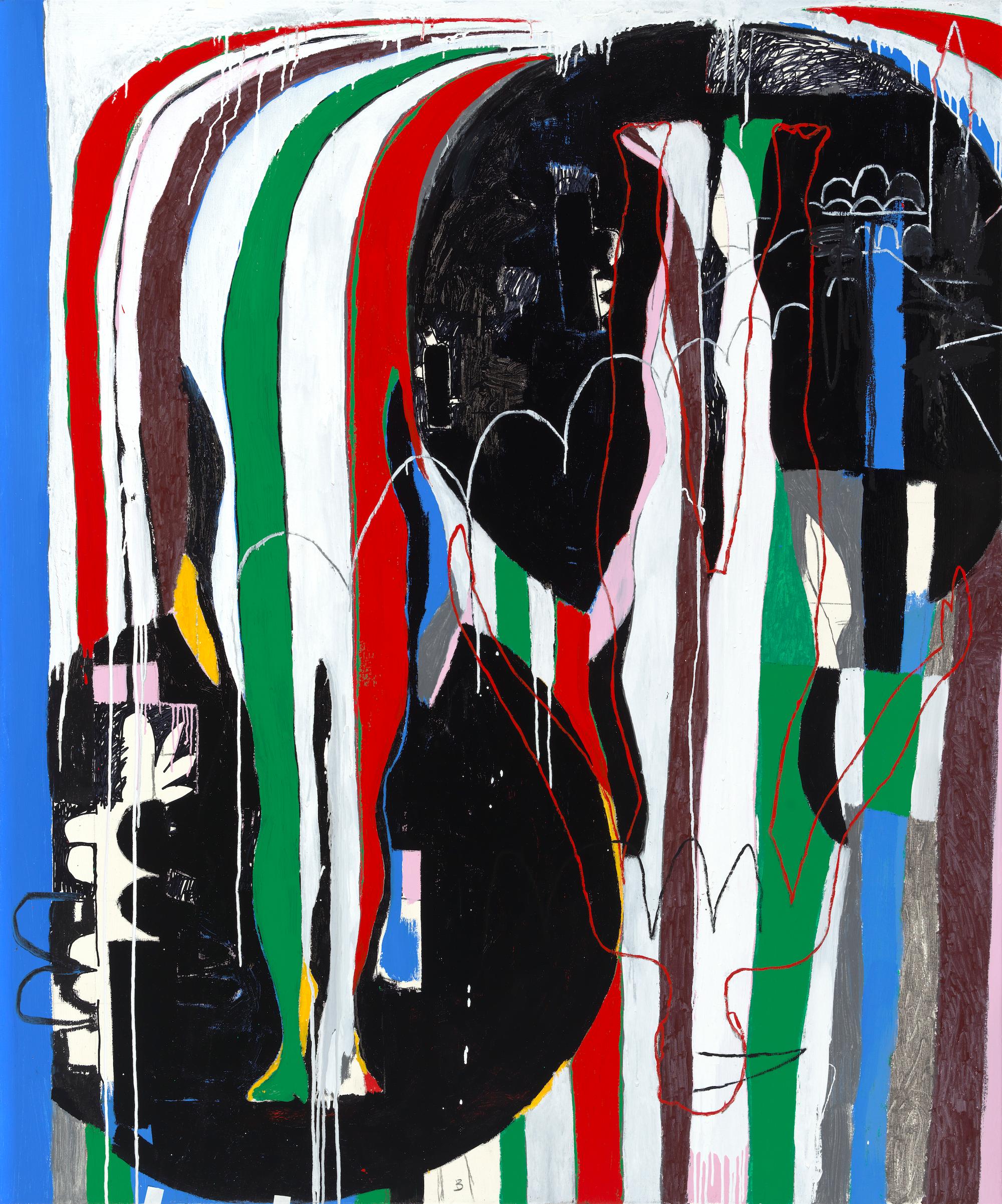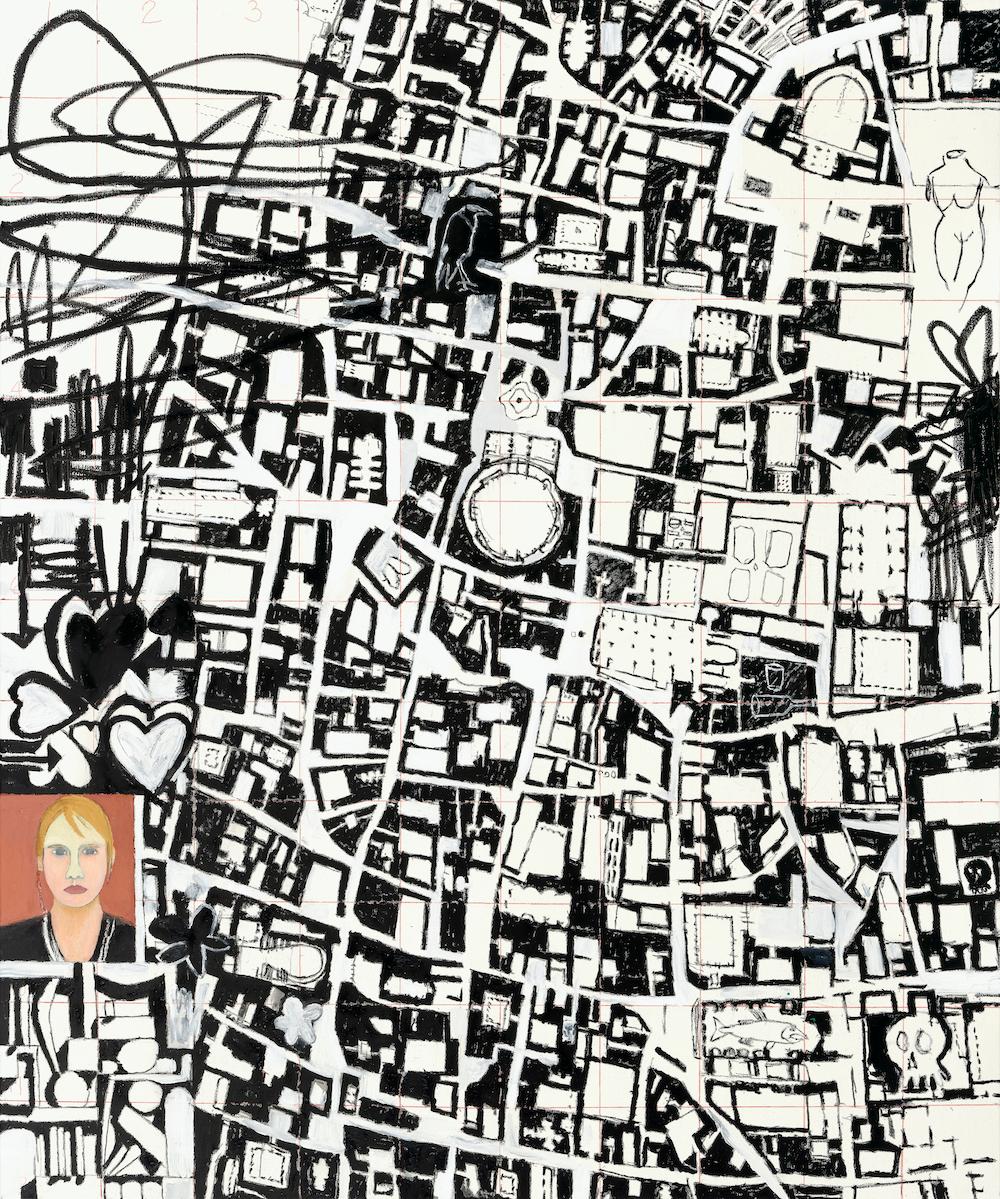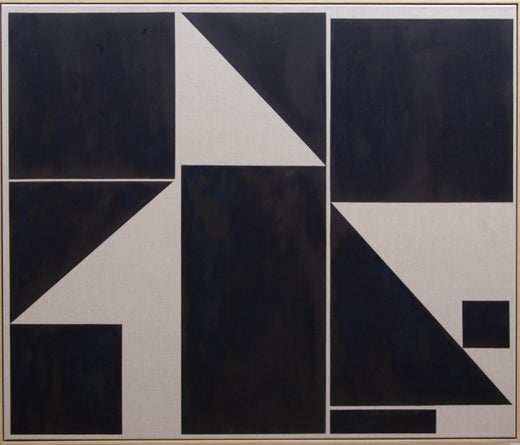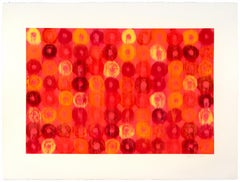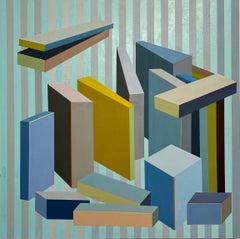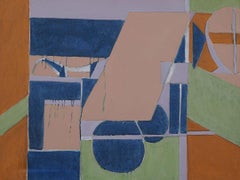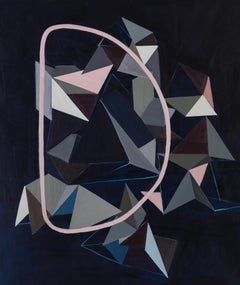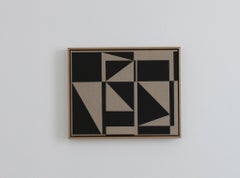
Abstract composition 01
View Similar Items
1 of 4
Carsten BeckAbstract composition 012022
2022
About the Item
- Creator:Carsten Beck (1986, Danish)
- Creation Year:2022
- Dimensions:Height: 15.75 in (40 cm)Width: 19.69 in (50 cm)Depth: 0.79 in (2 cm)
- Medium:
- Movement & Style:
- Period:
- Condition:
- Gallery Location:BARCELONA, ES
- Reference Number:1stDibs: LU2532212287702
Danish artist Carsten Beck (born in 1986) lives and works in Copenhagen, Denmark. His paintings can be considered a Scandinavian minimalist expression translated onto oil on canvas. The artworks are a blend of geometric perspectives in shapes and figures with a mathematical attention to detail and high-quality materials. Beck’s background in printmaking and photography provides him with options to view different perspectives in his art, as he creates new geometric forms in a powerful and contradictory color combination. Beck’s greatest inspiration for creating his artwork comes from taking long walks to capture new perspectives and angles. He translates this inspiration into new sketches and ideas. Beck seeks to relate his work to mid-century art while also drawing inspiration from it. Additionally, one of his favorite architects is Alvar Aalto. His art doesn’t necessarily need to represent or reflect anything beyond being a painting, as sometimes things don’t have to make sense or represent something concrete. It’s really about composition, as well as the balance between black and white; from the layers of colors to the placement of figures. Symmetrical and asymmetrical aspects need to be spot-on from the start. There is a challenge in making simplicity appear interesting, and Beck enjoys pushing himself in this regard. Therefore, Carsten Beck is constantly looking back to rework and redefine old concepts and ideas. This way, he can create new content. The major difference is that he has found his path in concrete art and has begun to explore it.
Authenticity Guarantee
In the unlikely event there’s an issue with an item’s authenticity, contact us within 1 year for a full refund. DetailsMoney-Back Guarantee
If your item is not as described, is damaged in transit, or does not arrive, contact us within 7 days for a full refund. Details24-Hour Cancellation
You have a 24-hour grace period in which to reconsider your purchase, with no questions asked.Vetted Professional Sellers
Our world-class sellers must adhere to strict standards for service and quality, maintaining the integrity of our listings.Price-Match Guarantee
If you find that a seller listed the same item for a lower price elsewhere, we’ll match it.Trusted Global Delivery
Our best-in-class carrier network provides specialized shipping options worldwide, including custom delivery.You May Also Like
Untitled (Yellow-Red Loops)
Located in Red Bank, NJ
This original oil painting is noted for its bright and vivid analogous color palette and soft, yet distinctive geometric shapes that appear to dance within the frame. The artist, Wyn...
Category
21st Century and Contemporary Abstract Geometric Abstract Paintings
Materials
Paper, Oil Crayon, Oil
Shift
Located in Fairfield, CT
Iris Kufert-Rivo describes her work... "pattern and repetition of forms is a subject I’ve pursued for decades. This new set of paintings called The Structure Series is inspired by t...
Category
2010s Abstract Geometric Abstract Paintings
Materials
Oil, Canvas
$12,800
Naval Occurrence, orange, blue & green mid-century, abstract geometrical work
By Richard Andres
Located in Beachwood, OH
Richard Andres (American, 1927-2013)
Naval Occurrence, c. 1963
oil on canvas
signed and titled verso
24 x 32 inches
Richard Andres was born in Buffalo, New York in 1927. A graduate of the Cleveland Institute of Art in 1950, he was immediately drafted and served for two years in the army as a mural painter. He received his Master of Arts from Kent State in 1961. A frequent exhibitor at galleries and museums and winner of multiple May Show prizes, Andres taught art in the Cleveland Public Schools for 28 years, as well as teaching the University of Buffalo, the Cleveland Institute of Art and the Western Reserve University.
Very little in Richard Andres’ childhood would have predicted his love of classical music, mid-century-modern architecture and certainly not his lifelong passion for art and in particular abstract art. Richard’s father, Raymond, had no more than a third-grade education, and his mother, Clara, was one of thirteen children – only three of whom lived into adulthood and none of whom attended high school.
They lived, when Richard was a boy, in a dingy area of Buffalo, NY in a walk-up apartment situated above a tavern. Raymond and Clara supplemented the income from their factory jobs in the bar downstairs with Raymond playing ragtime on the piano and Clara serving drinks. This often left Richard and his two older brothers at home alone to fend for themselves. The two older boys, Raymond and Russell, were - unlike Richard- rather rough and tumble and entertained themselves with stickball, boxing and the like. Richard, on the other hand, from a very young age liked to draw, or better yet even, to paint with the small set of watercolors he received for Christmas one year. Paper, however, at the height of the depression, was hard to come by. Luckily, Clara used paper doilies as decoration for the apartment and Richard would contentedly paint and then cut up doilies, gluing the pieces together to create collages.
At eight-years-old, he discovered the Albright-Knox Museum (then known as the Albright Art Gallery) and spent several hours a week there studying the paintings. He was particularly fond of Charles Burchfield‘s landscapes, enamored with their ‘messiness’ and thinking that they somehow captured more ‘feeling’ than works he was previously familiar with. For his tenth Christmas, he asked for and received a ‘how-to’ paint book by Elliot O’Hare. Through this self-teaching, he assembled the portfolio needed for acceptance to Buffalo Technical High School where he studied Advertising Arts. In his Junior year, he was encouraged to enter a watercolor painting, “Two Barns,” in the national 1944-45 Ingersoll Art Award Contest and was one of twelve grand prize winners – each one winning one hundred dollars. More importantly the painting was exhibited at the Carnegie Institute Galleries, which resulted in his winning a national scholarship to the Cleveland School of Art (The Cleveland Art Institute).
He flourished at the art school under the tutelage of faculty members such as Carl Gaertner, as well as that of visiting artists such as William Sommer and Henry George Keller. He would say in later years that Gaertner, in particular, influenced his attitude toward life as well as art. “Gaertner,” Andres said, “believed that there was no need to be a ‘tortured artist’, that an artist should rather enjoy beauty, family, and life in general.” Free to spend his days as he chose, he wandered the Cleveland Art Museum for most of the hours he was not attending classes or painting; the remaining time was spent drinking coffee at a local hangout with art school friends – which is where he met fellow Henry Keller scholarship winner, Avis Johnson. Richard was immediately smitten with Avis, but being rather shy, it took him the entire summer of 1948 to build up his courage to ask her out. Over that summer he ‘thought about Avis’ and worked in a diner to save money. He also used the hundred-dollar prize money won in High School to visit the first Max Beckmann retrospective in the United States at the City Art Museum in St. Louis. Over a half century later he spoke of that exhibit with a reverence usually reserved for spiritual matters, “I walked in and it was like nothing I had ever seen before... the color...It just glowed.”
Returning to campus in the Fall, the first thing he did was go to the coffee shop in hopes of finding Avis. He did, and she, upon seeing him, realized that she was also smitten with him. They quickly became known as ‘the couple’ on campus, and a year later, with Richard being drafted for the Korean war, they were quickly married by a Justice of the Peace, celebrating after with family at Avis’s Cleveland home. As a gift, faculty member John Paul Miller designed and made the simple gold wedding ring Avis wore for their 65 years of marriage. During those 65 years neither wavered in their mutual love, nor in the respect they shared for one another’s art.
The couple lived in a converted chicken coop in Missouri while Richard was in boot camp. At the camp, he would volunteer for any job offered and one of those jobs ended up being painting road signs. His commander noticed how quickly and neatly he worked and gave him more painting work to do - eventually recommending him for a position painting murals for Army offices in Panama. Until her dying day, Avis remained angry that “The army got to keep those fabulous murals and they probably didn’t even know how wonderful they were.” In Panama, their first son, Mark, was born. After Richard’s discharge in 1953, they moved back to the Cleveland area and used the GI bill to attend Kent State gaining his BA in education. The small family then moved briefly to Buffalo, where Richard taught at the Albright Art School and the University of Buffalo – and their second son, Peter, was born. Richard had exhibited work in the Cleveland May Show and the Butler Art Museum during his art school years, and during the years in Buffalo, his work was exhibited at the gallery he had so loved as a child, the Albright Art Gallery.
In 1956, the family moved back to the Cleveland area and Richard began teaching art at Lincoln West High School during the day while working toward his MA in art at Kent State in the evenings. Avis and Richard, with the help of an architect, designed their first home - a saltbox style house in Hudson, Ohio, and in 1958, their third son, Max (after Max Beckmann) was born. Richard enjoyed the consistency of teaching high school as well as the time it gave him to paint on the weekends and during the summer months. In 1961, he received his MA and his daughter, Claire, was born. With a fourth child, the house was much too small, and Avis and Richard began designing their second home. An admirer of MCM architecture, Richard’s favorite example of the style was the Farnsworth house – he often spoke of how the concepts behind this architectural style, particularly that of Mies van der Rohe, influenced his painting.
Andres described himself as a 1950’s...
Category
1960s Abstract Geometric Abstract Paintings
Materials
Oil
After Lygia Clark II
By Luciana Levinton
Located in New York, NY
Luciana Levinton de-contextualizes architectural elements, sketches facades, delineates floor plans, and blurs interiors to recreate precise figurations of architecture that transpor...
Category
2010s Abstract Geometric Abstract Paintings
Materials
Oil
After Lygia Clark I
By Luciana Levinton
Located in New York, NY
Luciana Levinton de-contextualizes architectural elements, sketches facades, delineates floor plans, and blurs interiors to recreate precise figurations of architecture that transpor...
Category
2010s Abstract Geometric Abstract Paintings
Materials
Oil
Mind (Two)
Located in Phoenix, AZ
oil and acrylic on canvas, over wood panel
Category
2010s Abstract Geometric Abstract Paintings
Materials
Canvas, Oil, Acrylic, Wood Panel
Recently Viewed
View AllMore Ways To Browse
Carsten Beck
Ecuador Painting
Sala Gaspar
Middle East Architecture
Ocean Spray
Oil Painting Richmond
Stanford Vintage
Wood Turning Art
Wood Turnings
Black Forest Wood Frame
Chrysler New York
Embellished Giclee
Mid Century Color Block Art
Wichita Art
Casa Canvas
Cosmopolitan Magazine
Sculpted Canvas
Airbrush Painting
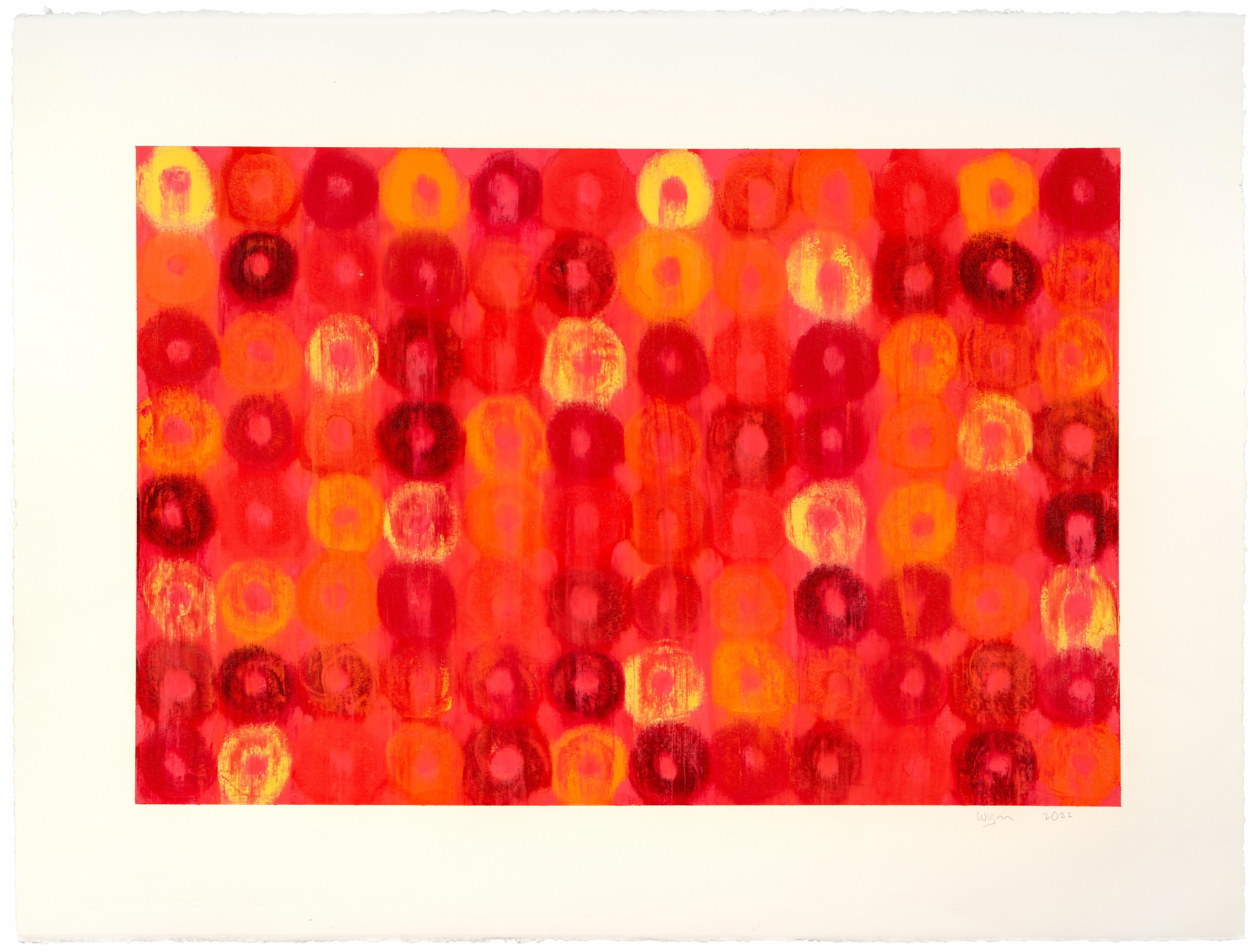
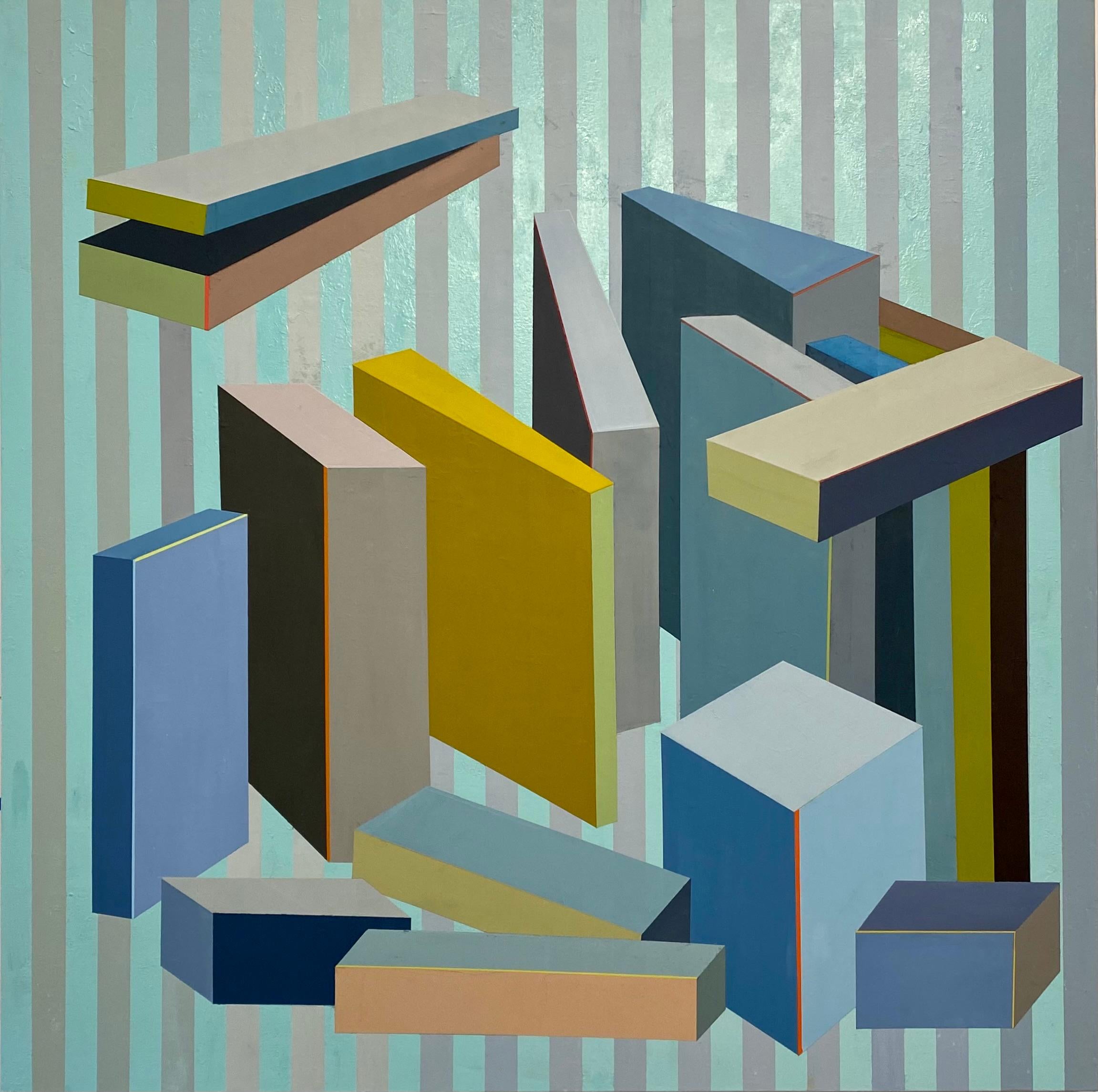
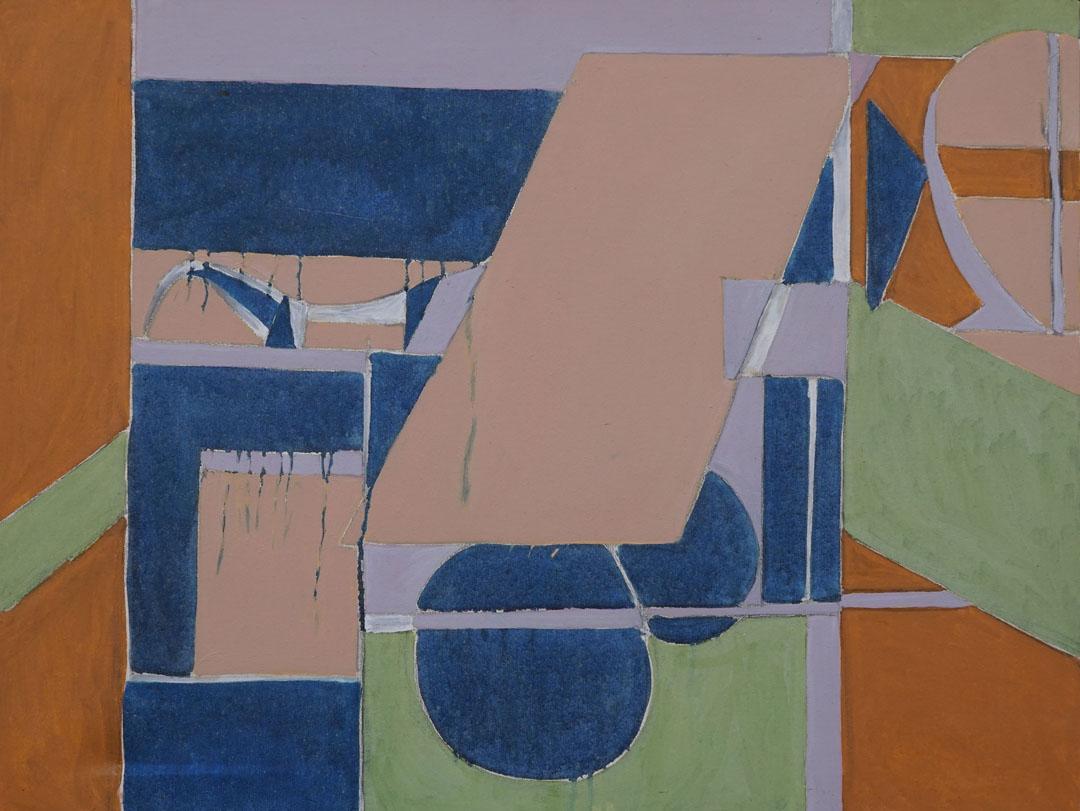
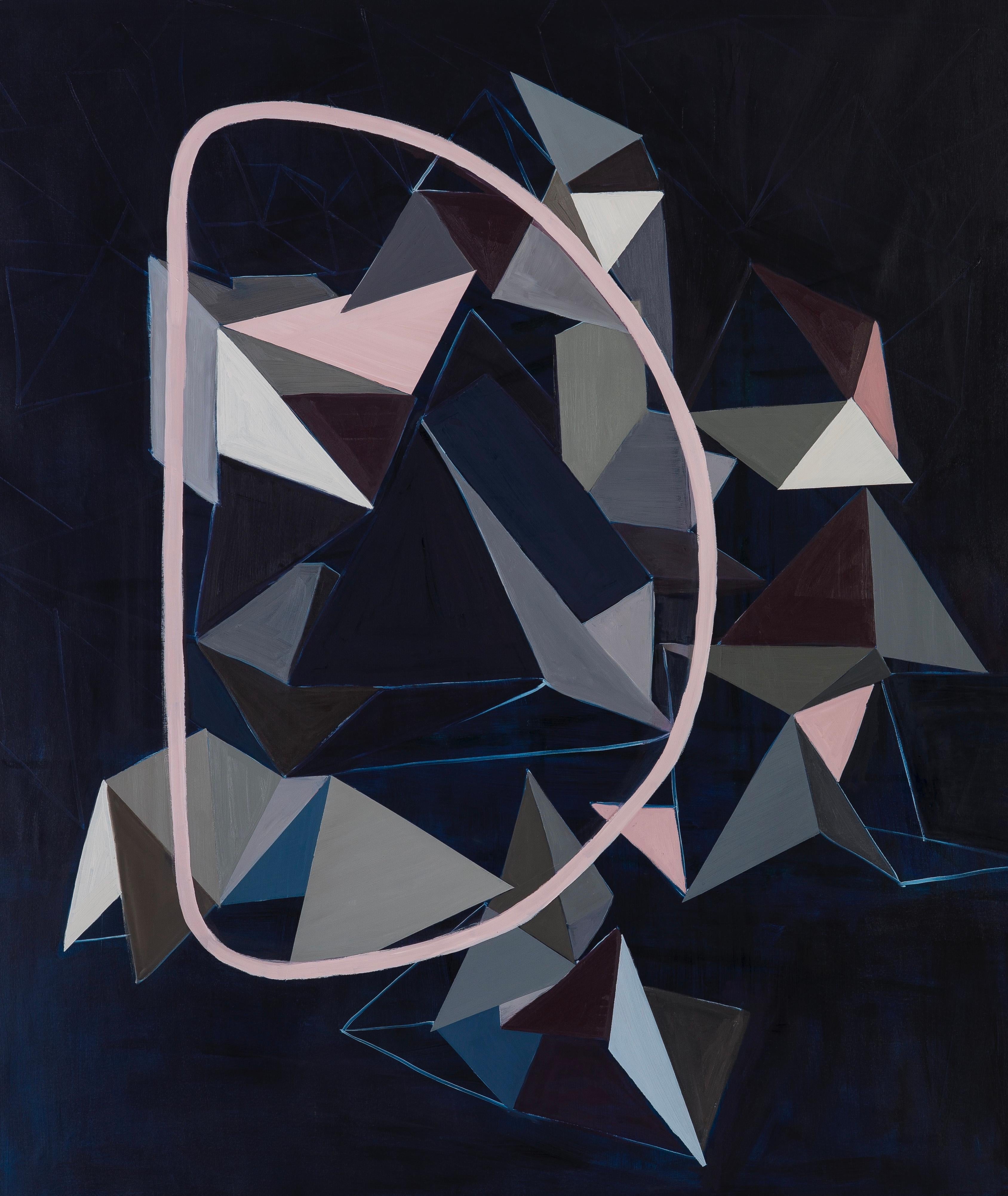
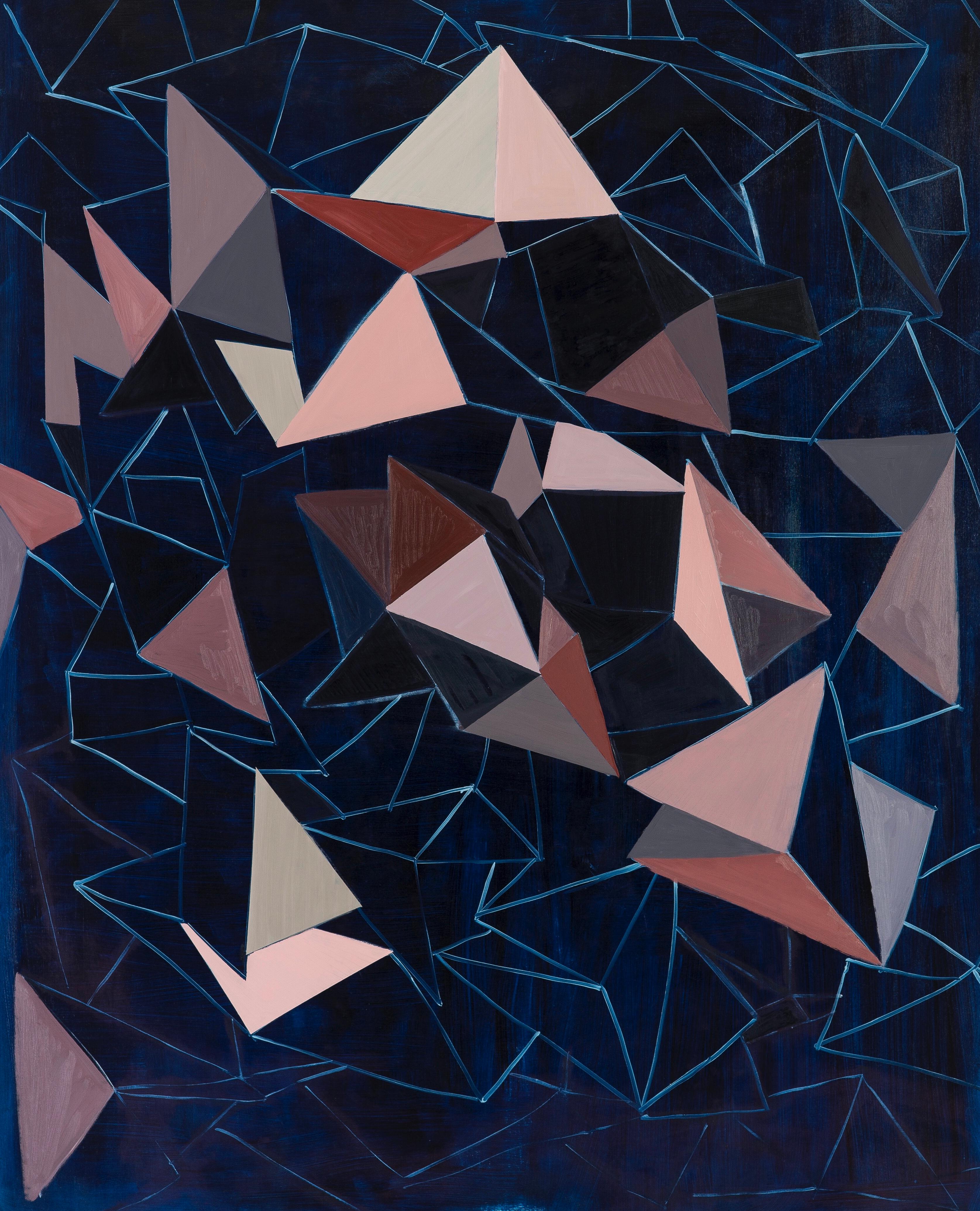
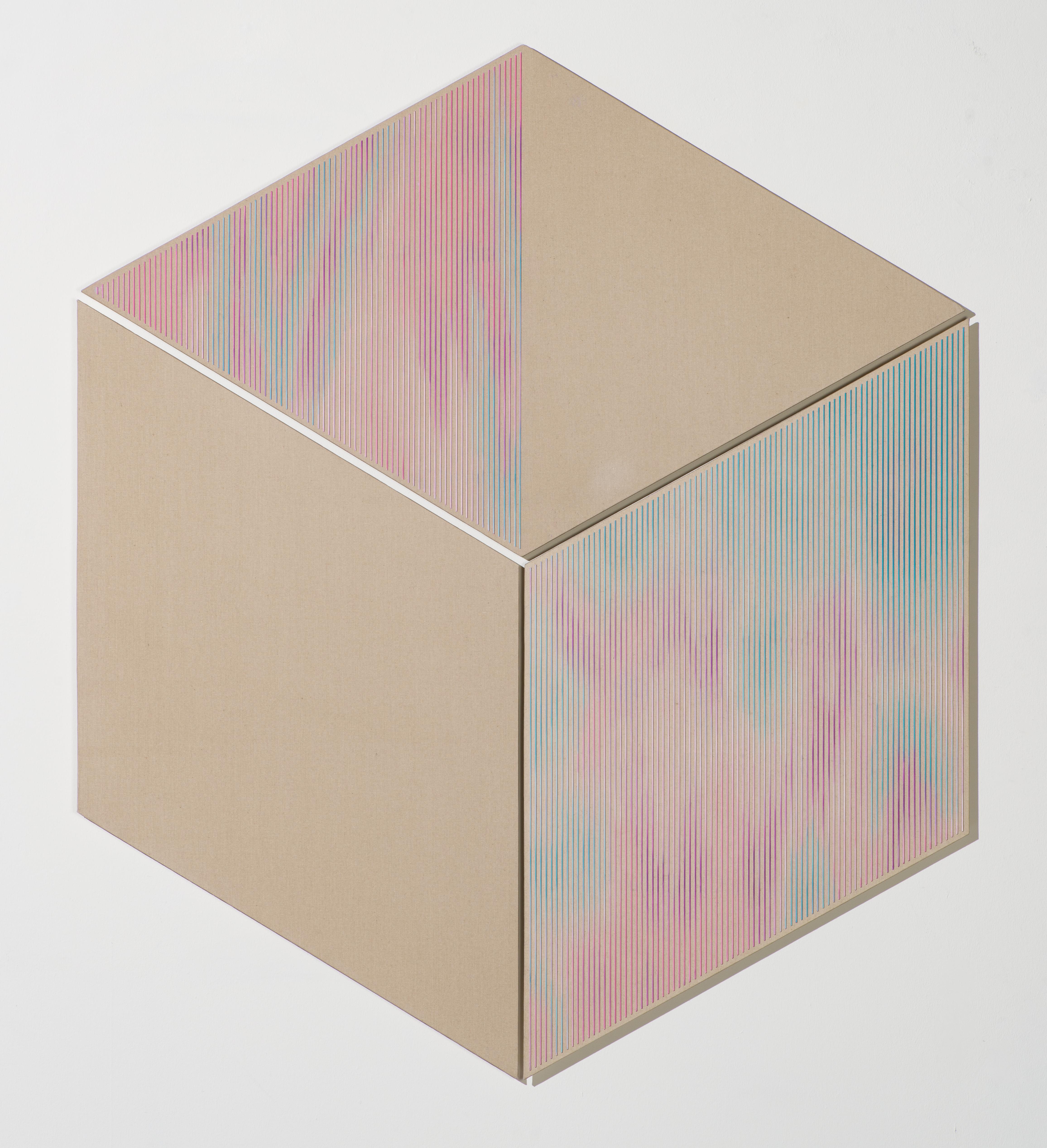
![[Abstract Geometric Building]](https://a.1stdibscdn.com/jason-berger-paintings-abstract-geometric-building-for-sale/a_3973/1656703517283/12_15_168_web_master.jpg)

